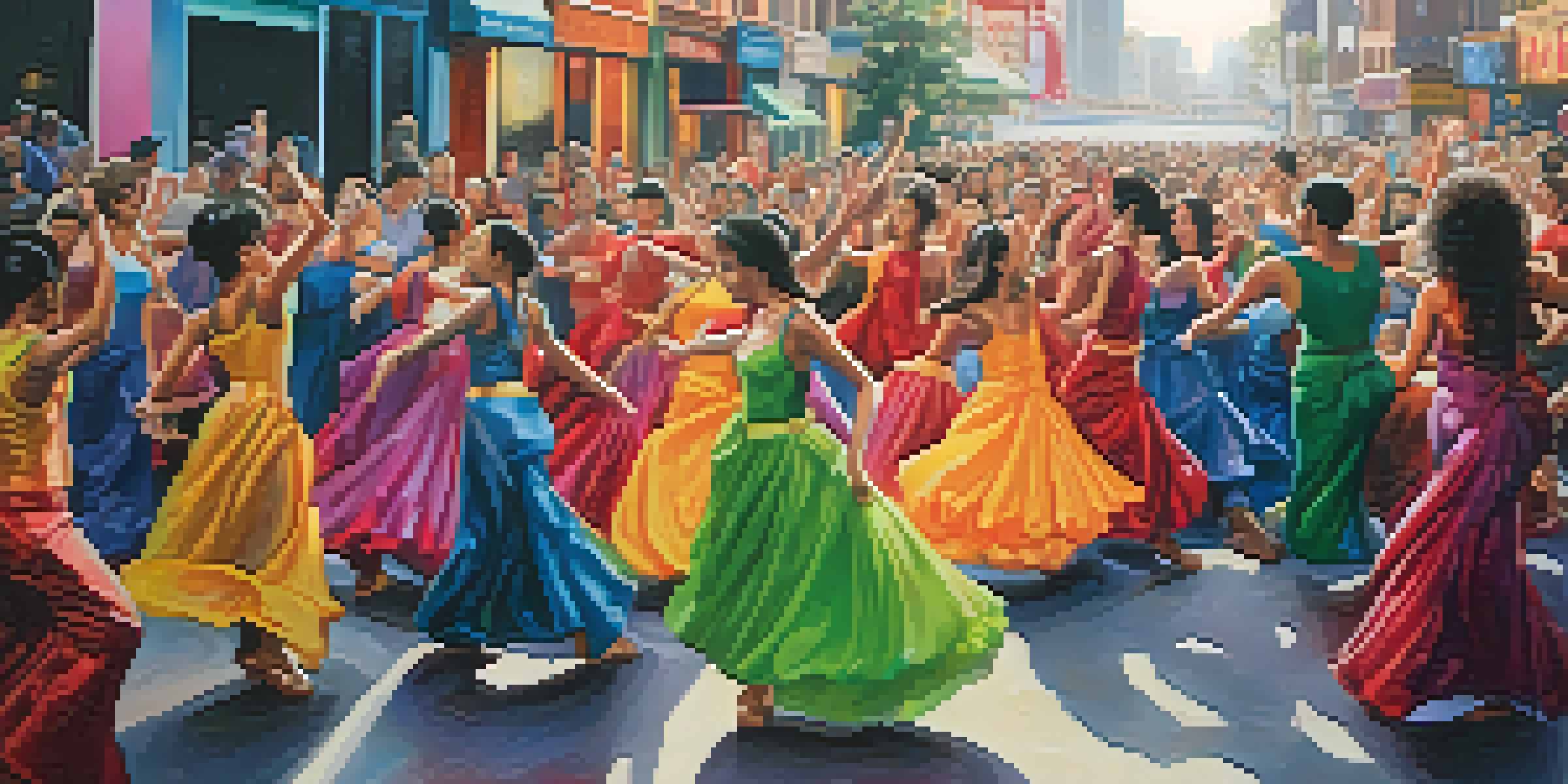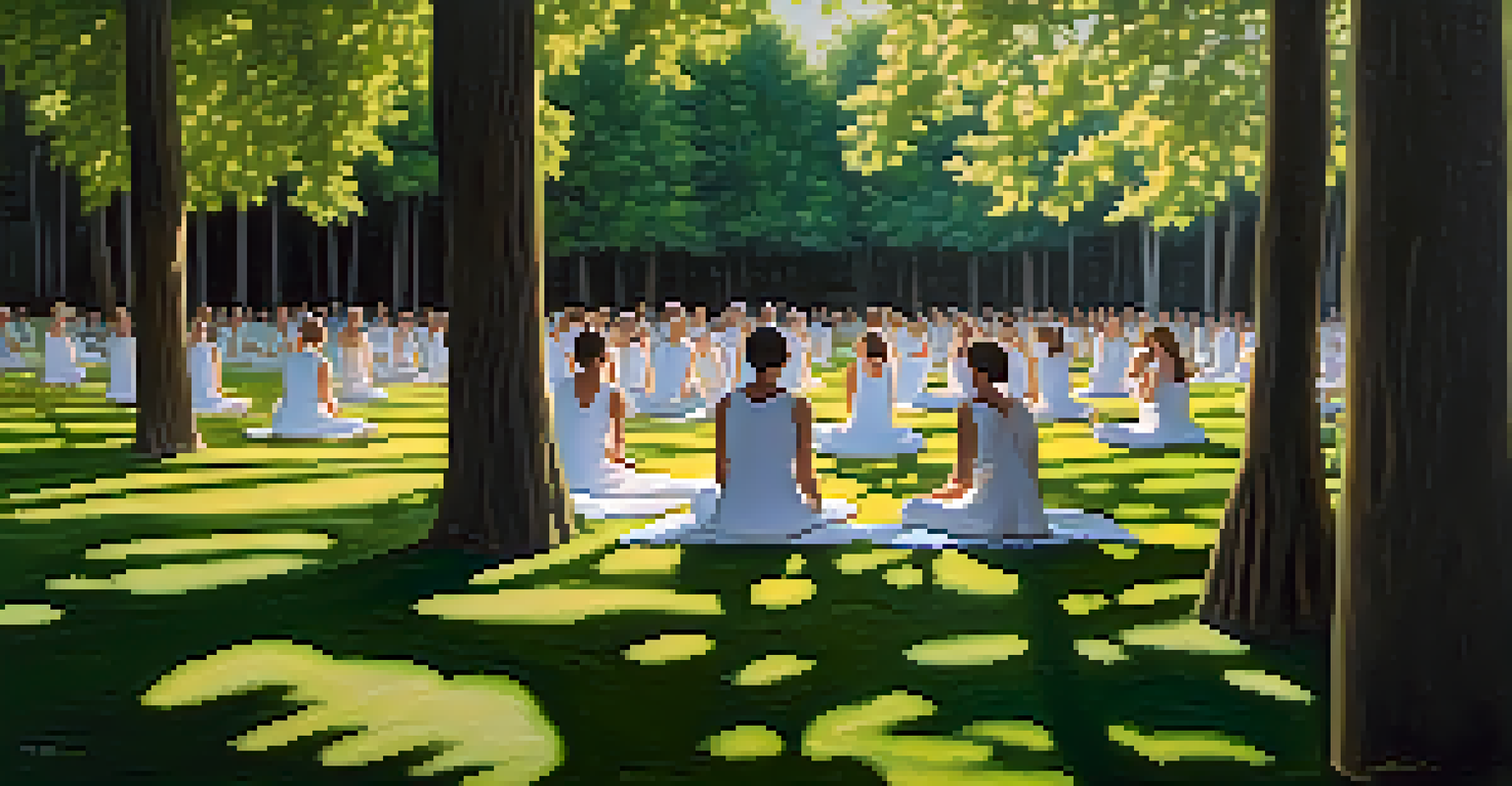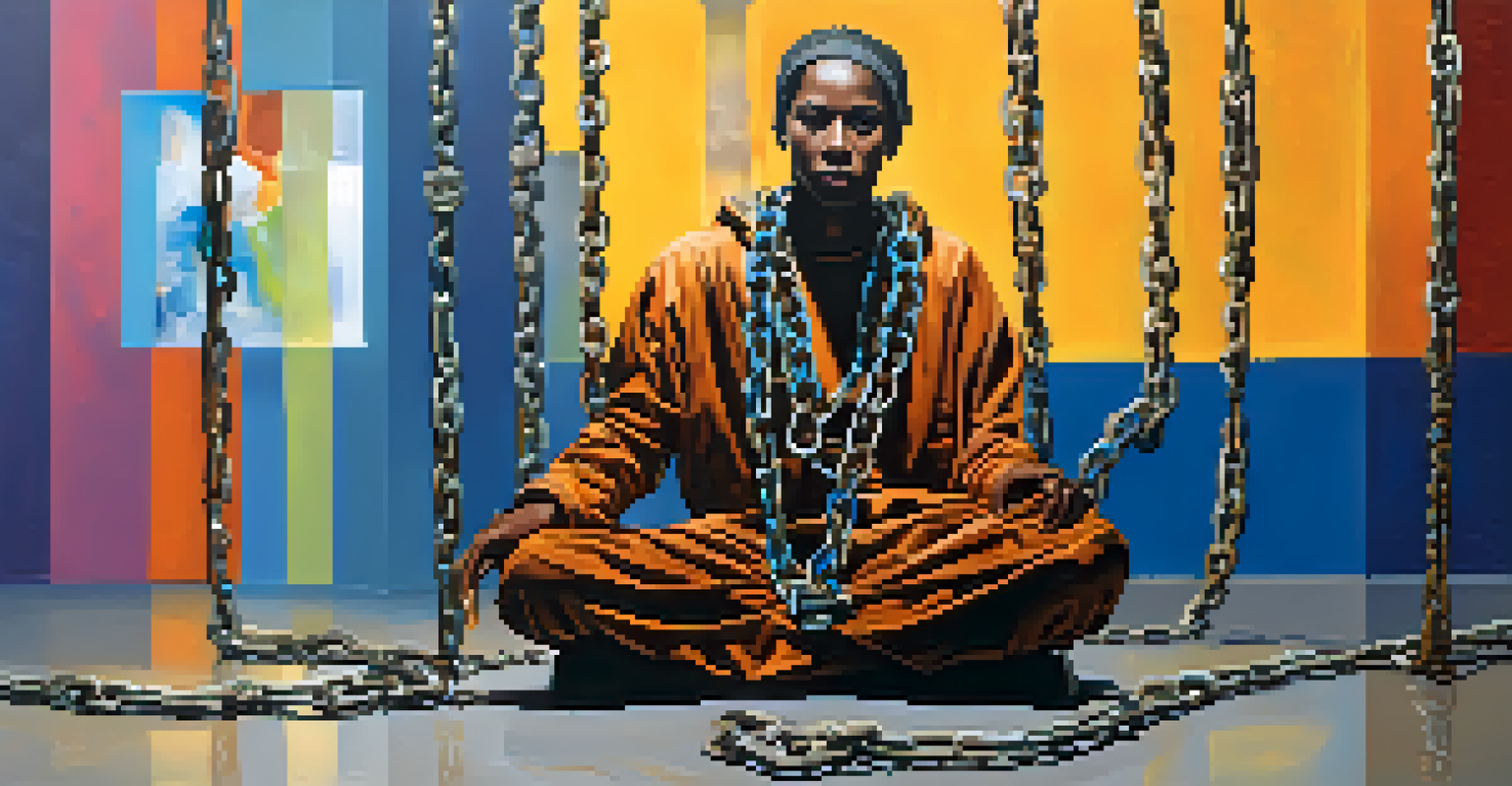The Role of Performance Art in Challenging Social Norms

Defining Performance Art and Its Purpose
Performance art is a unique blend of visual art and live action, often incorporating elements such as theater, music, and dance. Unlike traditional art forms, it emphasizes the artist's expression and interaction with the audience. The purpose of performance art can vary, but it frequently aims to provoke thought, evoke emotions, and challenge existing societal norms.
Art is not a mirror held up to reality, but a hammer with which to shape it.
By engaging directly with audiences, performance art creates an immersive experience that encourages participants to reflect on their beliefs and attitudes. This immediacy can make the messages conveyed more impactful than those delivered through conventional art forms. Through the body and voice, artists can communicate complex ideas in a visceral manner that invites dialogue.
For instance, consider Marina Abramović's work, which often pushes boundaries by confronting themes of vulnerability and endurance. Such performances not only captivate the audience but also challenge them to reconsider their understanding of social constructs, making performance art a powerful tool for societal critique.
Historical Context of Performance Art
Performance art has roots in various cultural practices and rituals, dating back centuries. Throughout the 20th century, it emerged as a distinct art form, particularly during movements like Futurism, Dada, and Surrealism. Artists sought to break away from traditional methods, utilizing their bodies as canvases to express dissatisfaction with political and social issues.

During the 1960s and 70s, artists such as Yoko Ono and Joseph Beuys further explored the potential of performance art in challenging societal norms. Their works often questioned authority, gender roles, and consumerism, foreshadowing the critical dialogues that would follow in the decades to come. This era marked a significant shift, as performance art began to be recognized as a legitimate and influential form of expression.
Performance Art's Provocative Nature
Performance art engages audiences directly, provoking thought and challenging societal norms through immersive experiences.
Understanding this historical context helps us appreciate the evolution of performance art and its ongoing relevance in addressing contemporary issues. Each performance builds on the legacy of those who came before, using the past as a springboard to engage with the present.
Challenging Gender Norms Through Performance
One of the most profound ways performance art challenges social norms is through the lens of gender. Artists like Judith Butler have utilized performance to interrogate the binary understanding of gender, showcasing how societal expectations dictate behavior. By blurring the lines between masculine and feminine, performance art invites audiences to question their preconceived notions about identity.
The function of art is to do more than tell it like it is; it’s to imagine what is possible.
Consider the work of artists like Cassils, who uses their body as a medium to confront traditional representations of gender. Their performances not only challenge the audience's perceptions but also encourage discussions about the fluidity of gender and the constraints imposed by society. Through such acts, performance art becomes a space for reimagining identity and self-expression.
These performances serve as powerful reminders that gender norms are socially constructed rather than inherent. By pushing against these boundaries, performance art fosters a more inclusive understanding of identity, offering a platform for marginalized voices to be heard and validated.
Exploring Racial and Cultural Identities
Performance art also plays a crucial role in exploring and challenging racial and cultural identities. Artists often draw on their personal experiences to highlight societal injustices and the complexities of their heritage. This self-exploration not only empowers the artist but also resonates deeply with audiences who share similar experiences.
For instance, artists like Kara Walker utilize performance to address themes of race and history, provoking critical conversations about the legacy of racism. By engaging with their cultural narratives, these artists confront stereotypes and challenge viewers to reflect on their own complicity in systemic issues. This process of reckoning is essential for fostering understanding and change.
Historical Significance in Art
With roots in cultural practices, performance art has evolved to address contemporary issues, reflecting its ongoing relevance.
Through the lens of performance art, audiences are invited to witness the richness of diverse cultures and the struggles they face. This platform serves as a catalyst for dialogue, breaking down barriers and fostering empathy among individuals from different backgrounds.
The Role of Performance Art in Political Activism
Performance art has long been intertwined with political activism, serving as a powerful medium for social change. Artists often use their performances to address pressing issues, from climate change to human rights violations. By transforming their bodies into instruments of protest, they draw attention to injustices that might otherwise go unnoticed.
For example, the Guerrilla Girls use performance art to confront sexism and racism in the art world, using humor and shock to engage audiences. Their performances challenge not only the art establishment but also societal attitudes towards gender and race. Such bold actions can inspire others to take a stand, showing that art can be a catalyst for activism.
In this way, performance art becomes a form of resistance, urging audiences to reflect on their roles in society. It encourages individuals to advocate for change, demonstrating that art is not just for aesthetics but can also serve as a powerful tool for social transformation.
Audience Engagement and Interaction
A distinctive feature of performance art is its emphasis on audience engagement and interaction. Unlike traditional art forms that often keep the viewer at a distance, performance art invites participation, fostering a sense of community. This interaction can take many forms, from inviting audience members to join in the performance to encouraging them to reflect on their own experiences.
This engagement transforms passive viewers into active participants, allowing them to become part of the narrative. For instance, in some performances, the audience may be prompted to share their thoughts or feelings, creating an open dialogue that breaks down barriers between artist and viewer. This participatory aspect amplifies the impact of the message being conveyed.
Catalyst for Social Change
Artists use performance art as a powerful medium for political activism, addressing critical issues and inspiring audiences to advocate for change.
Moreover, this interaction can lead to a shared experience that resonates far beyond the performance itself. By connecting on a personal level, artists and audiences can collaboratively explore complex themes, making the issues at hand feel more relevant and urgent.
The Future of Performance Art in Society
As society continues to evolve, so too does the role of performance art in challenging social norms. With the rise of digital platforms, artists are finding new ways to reach audiences and provoke thought, expanding the boundaries of traditional performance. Virtual performances and social media campaigns enable artists to address global issues and connect with a broader audience.
This adaptability demonstrates the resilience of performance art and its capacity to address contemporary challenges. As artists experiment with new mediums and formats, they continue to push the envelope, exploring topics like mental health, climate crisis, and social justice. The future of performance art lies in its ability to innovate and inspire.

Ultimately, performance art will remain a vital space for challenging societal norms and encouraging dialogue. By fostering understanding and empathy, it invites us to reconsider our beliefs and take action towards a more equitable society.